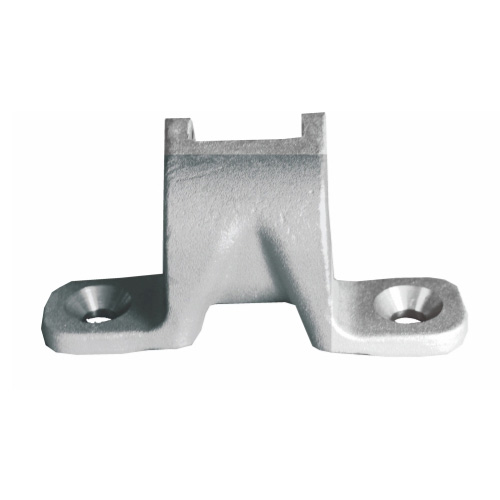What are the reasons for affecting the quality of forgings?
2022-06-21
The existence of forgings defects, some will affect the quality of subsequent processing or processing quality, and some seriously affect the performance and use of forgings, and even greatly reduce the service life of finished products, endangering safety. So in order to guarantee and improve the quality of forgings, in addition to strengthen the quality control in the process, take corresponding measures to prevent the generation of forging defects, should also be the necessary quality inspection, to prevent with the downstream processes (e.g., heat treatment, surface treatment, cold working) and use the defect of bad influences on the performance of forging into the subsequent working procedure. After quality inspection, remedial measures can also be taken according to the nature of the defects and the extent of the impact on the use of the forged parts, so that it meets the technical standards or the requirements of use.
Therefore, forgings quality inspection in a sense, on the one hand is the quality control of the forged, on the other hand is to point out the improvement direction of forging technology, so as to ensure that the quality of forgings meet the requirements of forging technical standards, and meet the requirements of design, processing and use.
Forgings in the process of forging have the following points to pay attention to, if improper, may affect the quality of forgings, next I will take a look.
The forging process generally consists of the following processes, namely blanking, heating, forming, cooling after forging, pickling and heat treatment after forging. If the forging process is not proper, a series of forging defects can be produced.
Heating process includes furnace temperature, heating temperature, heating speed, holding time, furnace gas composition, etc., if improper heating, such as heating temperature is too high and heating time is too low, will cause decarbonization, overheating, overburning and other defects.
For the billet with large section size and poor thermal conductivity and low plasticity, if the heating rate is too fast and the holding time is too short, the temperature distribution is not uniform, causing thermal stress and cracking of the billet.
Forging forming process includes deformation mode, deformation degree, deformation temperature, deformation speed, stress state, mold situation and lubrication conditions, etc. If the forming process is improper, it may cause coarse grain, uneven grain, various cracks, folding, flow, eddy current, residual as-cast structure, etc.
Therefore, forgings quality inspection in a sense, on the one hand is the quality control of the forged, on the other hand is to point out the improvement direction of forging technology, so as to ensure that the quality of forgings meet the requirements of forging technical standards, and meet the requirements of design, processing and use.
Forgings in the process of forging have the following points to pay attention to, if improper, may affect the quality of forgings, next I will take a look.
The forging process generally consists of the following processes, namely blanking, heating, forming, cooling after forging, pickling and heat treatment after forging. If the forging process is not proper, a series of forging defects can be produced.
Heating process includes furnace temperature, heating temperature, heating speed, holding time, furnace gas composition, etc., if improper heating, such as heating temperature is too high and heating time is too low, will cause decarbonization, overheating, overburning and other defects.
For the billet with large section size and poor thermal conductivity and low plasticity, if the heating rate is too fast and the holding time is too short, the temperature distribution is not uniform, causing thermal stress and cracking of the billet.
Forging forming process includes deformation mode, deformation degree, deformation temperature, deformation speed, stress state, mold situation and lubrication conditions, etc. If the forming process is improper, it may cause coarse grain, uneven grain, various cracks, folding, flow, eddy current, residual as-cast structure, etc.
In the cooling process after forging, if the process is not proper, it may cause cooling crack, white spot, reticulated carbide and so on. These forging process, forging in the processing should pay special attention to, so as to better protect the quality of forging.

Previous:Forging material process performance
X
We use cookies to offer you a better browsing experience, analyze site traffic and personalize content. By using this site, you agree to our use of cookies.
Privacy Policy



